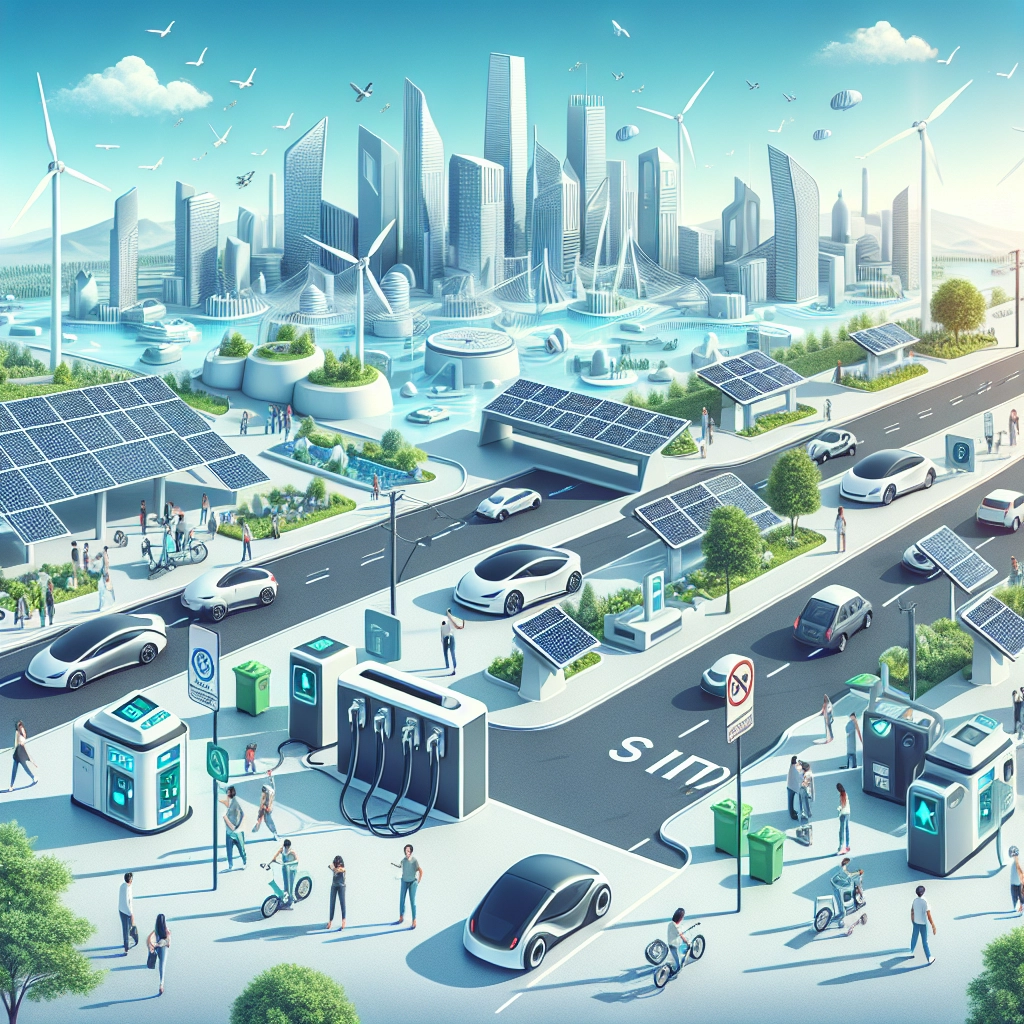
- Published on
- Authors

- Name
- ric de yuga 😄
The world is on the cusp of a transportation revolution, with electric vehicles (EVs) leading the charge towards a cleaner, greener future. As more and more consumers embrace EVs, it has become increasingly clear that our current infrastructure is not equipped to handle the growing demand for charging solutions. To truly unlock the potential of electric vehicles and create a sustainable future, we must reimagine and rebuild our infrastructure from the ground up.
🔌 The Need for a Robust Charging Infrastructure
One of the biggest challenges facing the widespread adoption of electric vehicles is the lack of a comprehensive charging infrastructure. While the number of EV charging stations has grown in recent years, they are still far from ubiquitous, and many drivers face "range anxiety" – the fear of running out of power before reaching their destination or a charging point.
To address this issue, we need to invest heavily in building a robust network of charging stations that can accommodate the growing number of EVs on the road. This means not only increasing the quantity of charging points but also ensuring that they are strategically placed in convenient locations, such as parking lots, shopping centers, and along major highways.
🛣️ Revolutionizing Roads: Wireless Charging and Smart Highways
While expanding the network of traditional charging stations is crucial, it is only one piece of the puzzle. To truly revolutionize our infrastructure for a sustainable electric future, we must think beyond the conventional charging paradigm and embrace innovative solutions.
One promising approach is the development of wireless charging roads. By embedding inductive charging technology beneath the surface of highways and streets, EVs could charge their batteries while driving, eliminating the need for lengthy stops at charging stations. This would not only alleviate range anxiety but also make long-distance travel more convenient and efficient.
Moreover, the integration of smart technology into our highways could further optimize the charging process. Imagine a future where EVs communicate with the road, receiving real-time information about traffic conditions, energy consumption, and the availability of charging points. This level of connectivity would allow for seamless, efficient charging and help drivers make informed decisions about their routes and energy usage.
🏙️ Building Smart Cities: Integrating EVs into the Urban Landscape
The transition to a sustainable electric future goes beyond just revolutionizing our roads. To fully support the widespread adoption of EVs, we must also rethink the way we design and build our cities.
Smart cities of the future will seamlessly integrate EV charging infrastructure into the urban landscape. This means incorporating charging points into street lamps, building facades, and even public spaces like parks and plazas. By making charging accessible and convenient, we can encourage more people to switch to electric vehicles and reduce our reliance on fossil fuels.
Furthermore, smart cities will leverage the power of data and artificial intelligence to optimize energy usage and distribution. By analyzing real-time data on EV charging patterns, energy consumption, and grid capacity, cities can dynamically allocate resources and ensure that the charging infrastructure is used efficiently and sustainably.
🌿 Powering the Future: Renewable Energy and EV Integration
As we build a sustainable electric infrastructure, it is crucial that we also consider the source of the energy that powers our EVs. To truly achieve a green future, we must transition away from fossil fuels and embrace renewable energy sources like solar, wind, and hydropower.
By integrating EV charging infrastructure with renewable energy systems, we can create a virtuous cycle of sustainability. Imagine a future where EVs are charged using energy generated by solar panels on building rooftops, or where wind farms power the wireless charging roads that keep our vehicles running.
Moreover, EVs themselves can play a role in supporting the grid and promoting the use of renewable energy. Through vehicle-to-grid (V2G) technology, EVs can act as mobile energy storage units, feeding excess power back into the grid during times of high demand or low renewable energy production. This not only helps balance the grid but also incentivizes EV owners to participate in the green energy economy.
🌍 Conclusion
The transition to a sustainable electric future is not just about replacing gas-powered vehicles with EVs; it requires a fundamental reimagining of our infrastructure. By investing in a robust charging network, pioneering wireless charging roads, building smart cities, and integrating renewable energy, we can create a transportation system that is cleaner, greener, and more efficient.
As we embark on this journey of transformation, it is essential that we approach the challenge with innovation, collaboration, and a commitment to sustainability. By working together – governments, businesses, and individuals – we can build the infrastructure necessary to support the widespread adoption of electric vehicles and pave the way for a brighter, cleaner future.
The road ahead is long, but the destination is clear: a world where electric vehicles are the norm, and our infrastructure is designed to support and sustain them. By embracing this vision and taking bold action, we can revolutionize transportation, combat climate change, and create a healthier, more vibrant planet for generations to come. The time to act is now – let us charge forward and build the sustainable electric future we all deserve.
